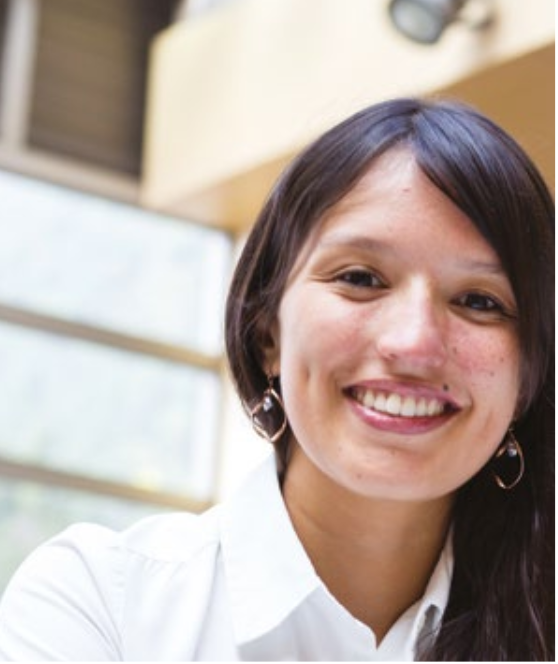Escuela de Verano 201918
| Nombre del curso: | Activity Recognition from Sequential Sensor Datasets |
| Créditos: | 4 |
| Profesores: | Sozo Inoue Paula Lago |
| Horario: | Lunes a Viernes de 6:00 p.m. a 8:50 p.m.
Horario potencial para actividades eventuales: sábado de 8:30 a.m. – 12:30 p.m. |
| Versión PDF | Click Aquí |
Activity Recognition from Sequential Sensor Datasets
Descripción general del curso

Activity Recognition (AR) is the process that enables inference of human activity by analyzing sensor data, coming from devices like smartphones. AR lies at the heart of many context-aware applications in domains such as ambient intelligence, healthcare and wellness, sports and fitness analysis, surveillance, personalized advertising and others. AR problem focuses in the temporal nature of sensor data, analysis of imbalanced dataset and distribution changes over time. Daily activities are complex and personal, which introduce challenges to feature engineering and personalization. Also, new activities need learning methods allowing adaptation. In this course we study the activity recognition chain (data acquisition, preprocessing, segmentation, feature extraction, classification). The studied techniques can be applied to the analysis of other sequential data (sensor data, stock market data, voice recognition).
The course will be taught in English. All assignments and evaluations will be in English.
Course Prerequisites
The course assumes some knowledge of machine learning and good programming skills.
Practical Sessions will be in Python.
|
|
|
A |
|
Fecha: |
Horario: |
Idioma: |
Profesores: |
|
10 de Junio al 27 de Junio |
Lunes a Viernes |
Inglés |
Sozo Inoue y Paula Lago |
| Domingo 02 |
Lunes 03 |
Martes 04 |
Miércol. 05 |
Jueves 06 |
Viernes 07 |
Sábado 08 |
| Domingo 09 |
Lunes 10 |
Martes 11 |
Miércol. 12 |
Jueves 13 |
Viernes 14 |
Sábado 15 |
| Domigo 16 |
Lunes 17 |
Martes 18 |
Miércol. 19 |
Jueves 20 |
Viernes 21 |
Sábado 22 |
| Domigo 23 |
Lunes 24 |
Martes 25 |
Miércol. 26 |
Jueves 27 |
Viernes 28 |
Sábado 29 |
| Lunes a Viernes 6:00 p.m. – 8:50 p.m. |
| Sábado (Horario potencial de respaldo) 8:30 a.m. – 12:30 p.m. |
Cupos:
|
|
|
|
21 |
9 |
Válido como:
|
|
|
|
|
Curso de profundización |
Curso electivo |
Electiva profesional |
Profesores
Sozo Inoue
|
Universidad Kyushu Institute of TechnologyHoja de vida His research interests include human activity recognition with smart phones, and healthcare application of web/pervasive/ubiquitous systems. Currently he is working on verification studies in real field applications, and collecting and providing a large-scale open dataset for activity recognition, such as a mobile accelerator dataset with about 35,000 activity data from more than 200 subjects, nurses’ sensor data combined with 100 patients’ sensor data and medical records, and 34 households’ light sensor data set for 4 months combined with smart meter data. |
Paula Lago
|
Universidad Kyushu Institute of TechnologyHoja de vida Investigadora Postdoctoral en temáticas de análisis adaptable de flujos de datos. Ha desarrollado su investigación alrededor de temas relacionados con Ambientes Asistidos para la Vida Diaria (AAL – Ambient Assisted Living). Trabaja actualmente en análisis de flujos de datos de sensores para el reconocimiento de actividad diaria en ambientes hospitalarios |
Evento patrocinado por :

Descripción detallada
Activity Recognition (AR) is the process that enables our smartphones to know how much we have walked this week or if we went to work by bike yesterday. By analyzing the data produced by sensors, we can identify the activity performed by an user in a given time. Activity Recognition lies at the heart of many context-aware applications in domains such as ambient intelligence, healthcare and wellness, sports analysis, surveillance, personalized advertising and others.
The main goal of Activity Recognition is to automatically identify what the user is doing from sensor data captured over a period of time. Although the AR problem can be framed as a traditional machine learning problem, it has some characteristics that make it a different problem, for example:
• The temporal nature of sensor data does not fit the independent and identically distributed hypothesis of supervised learning problems. Instead, sequential relationships in the data must be considered to improve performance.
• Different durations of activities give rise to imbalanced dataset and natural personal changes give rise to distribution changes over time.
• Differences in the way activities are done from person to person introduce challenges to feature engineering and personalization. As a simple example, one person might walk as fast as another person jogs.
• Complex activities that are a composition of many other activities, the “null activity” (time where no activity of interest is performed) and new activities not considered in the training model introduce challenges for model training and adaptation.
In this course we study the activity recognition chain (data acquisition, preprocessing, segmentation, feature extraction, classification). We study techniques to overcome specific challenges of activity recognition at each step including sensor selection, windowing techniques, feature engineering, feature learning and training models. Many of these techniques can be applied to the analysis of other sequential data (sensor data, stock market data, voice recognition).
We discuss system design considerations such as user interface, handling streaming data and network considerations. At the end, we also discuss some ethical implications of human activity recognition.
The experience of the professors is on the healthcare domain, in applications like elder care and nurse care activity recognition. Examples from this domain will be studied throughout the course.
The course is divided in three main units.
Introduction: The Human Activity Recognition Chain
In this unit, the goal is to understand a typical human activity recognition chain and to implement each of the steps in it. We will apply this chain to analyze different types of sensor data (for example accelerometer data and binary sensor data).
An activity recognition chain typically comprises the steps of Preprocessing, Segmentation (windowing), Feature Extraction, Feature Selection and Classification.
Challenges in Activity Recognition and Proposed Solutions
In this unit we will study the problems specific to human activity recognition and the solutions that have been proposed in the literature to overcome each of them. For example:
a. How to avoid overfitting situations and how to perform cross-validation in time series data.
b. Cross-people and complex activity recognition: intra-class variability and inter-class similarities.
c. Imbalanced classes and the ‘Null’ Class
d. New activity recognition
Towards Real-life Applications: System design considerations
In this last unit, we will analyze some real-life use cases (e.g. nursing home activity recognition for log creation, at home activity recognition for elder monitoring) and their specific requirements such as sensor selection, data collection, data transmission or data storage. We will discuss how these requirements may impact the activity recognition models and the evaluation metrics used. We will also analyze some of the concerns for activity recognition systems and architecture design.
Evaluación
The course evaluation will consist of in-class work and participation, practical sessions and individual assessment. Several practice sessions and group discussion will be proposed.
Individual and group assignments will be proposed. Students are expected to prepare course readings and practical assignments.
Bibliografía
La bibliografía detallada es publicada a los inscritos en el curso al inicio de las actividades.


